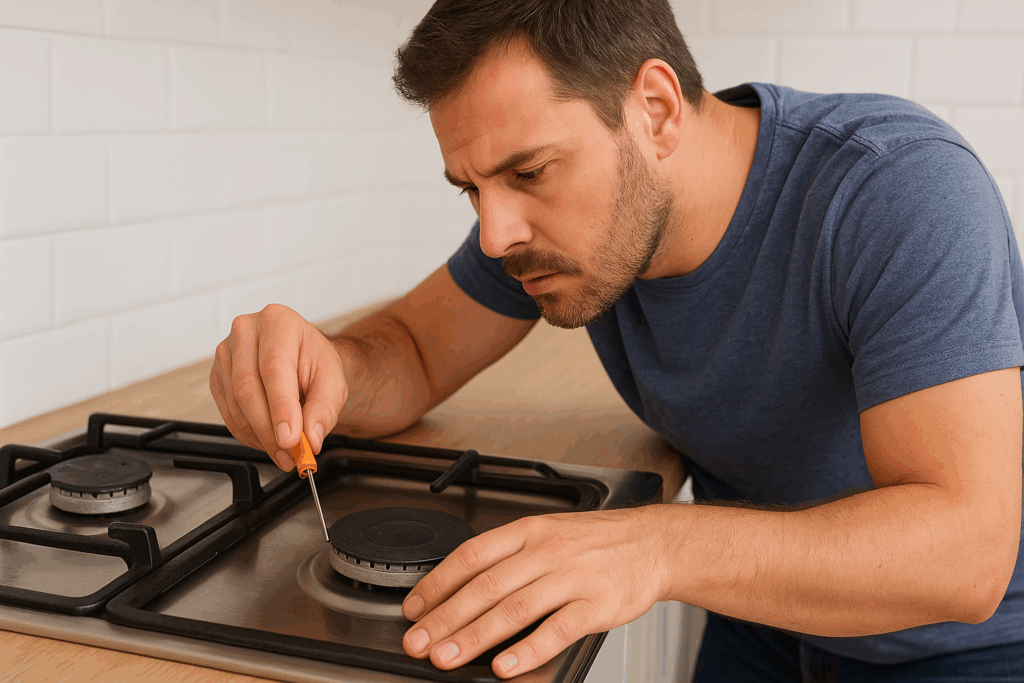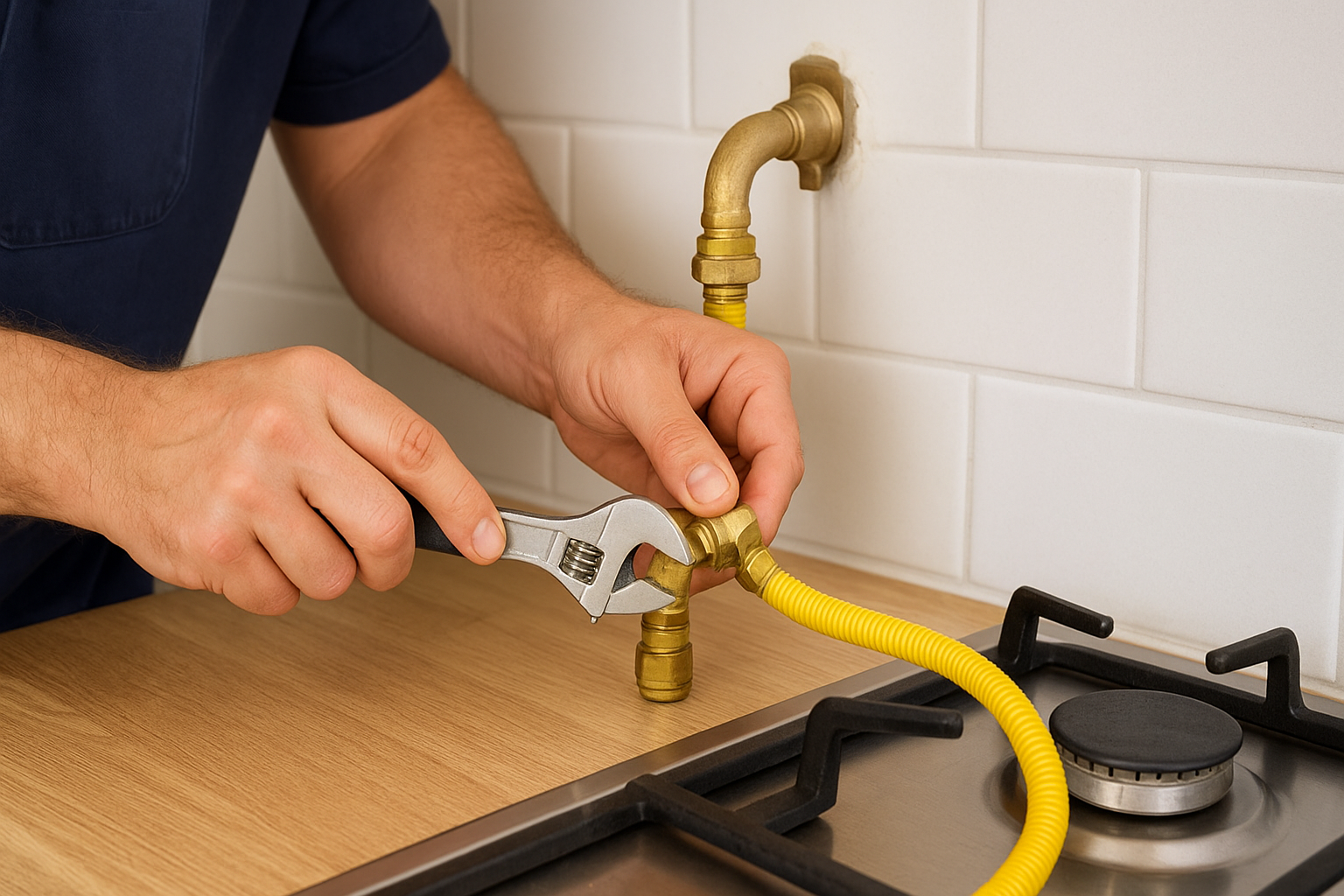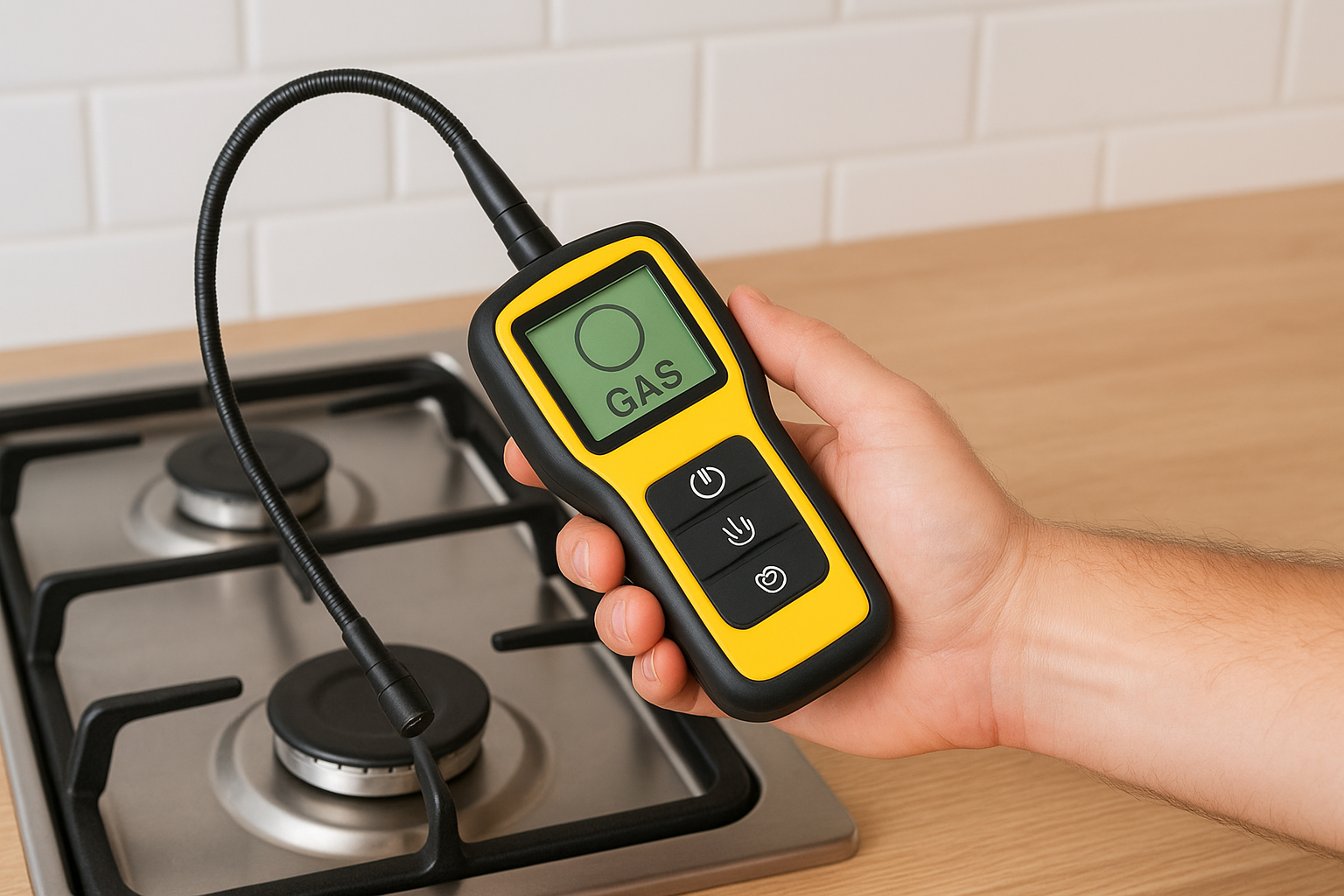Why Every Home Needs Smart Gas Stove Repair
A gas stove is the heart of your kitchen — the spot where everyday meals and warm family moments come to life. When it stops working properly, even small issues can cause big frustration. Flames that flicker unevenly, knobs that jam, or burners that won’t ignite are all signs your gas stove needs attention.
This article brings you ten brilliant gas stove repair solutions designed for every home. Whether you’re dealing with leaks, ignition problems, or low heat, these methods combine safety, simplicity, and effectiveness.
You’ll also learn preventive care tricks to reduce the need for frequent repairs — because maintaining a gas stove isn’t just about fixing it when it breaks, but keeping it running smoothly every day.
1. Detecting Gas Leaks Early – Safety First Always
A gas leak is the most dangerous issue that can happen in any kitchen. Quick detection can save both your appliance and your family’s safety.
How to spot a gas leak:
- Strong smell of sulfur or “rotten eggs.”
- Hissing sound near burners or the connection pipe.
- Bubbles forming when soapy water is applied to joints.
Immediate actions to take:
- Turn off the stove and the main gas valve immediately.
- Open windows and doors for ventilation.
- Do not use lighters, switches, or electrical devices nearby.
Safety Tip 🧯
Never use a flame to locate a gas leak. Always use the soap-water test and call a professional if the smell persists.
Gas leaks are not a DIY repair. If you suspect one, contact a certified gas stove repair technician immediately.
2. Fixing Weak Flame Issues – Restoring Perfect Heat
Weak or uneven flames make cooking inefficient and slow. This usually happens due to clogged burner holes, low gas pressure, or dust buildup.
Quick steps to fix it:
- Turn off the gas and allow burners to cool.
- Remove burner caps and clean holes with a toothbrush.
- Check the gas regulator — it should be firmly attached.
- Reassemble and test.
Common causes & fixes table:
| Cause | Symptom | Simple Fix |
|---|---|---|
| Clogged burner ports | Yellow or small flame | Use a thin wire to unclog |
| Loose regulator | Irregular flame height | Tighten connection |
| Low gas pressure | Flame goes out easily | Contact supplier |
Pro Tip 💡
Regular cleaning prevents most weak-flame issues. Include burner maintenance in your monthly kitchen cleaning checklist.

3. Repairing Ignition Problems – When Sparks Stop Working
When your gas stove won’t ignite, it could be due to moisture, worn-out spark electrodes, or loose wiring.
How to troubleshoot ignition issues:
- Dry any moisture around burners or igniters.
- Ensure the spark tip is clean and aligned close to the burner.
- Replace the battery (for auto-ignition models).
- Check wires for loose connections.
If sparks are absent even after cleaning and battery replacement, it’s time to schedule a professional gas stove repair service.
Safety Tip 🔌
Always unplug the stove before checking the ignition or electrical connections.
4. Cleaning Clogged Burner Heads – A DIY Game-Changer
Burner clogging is one of the top reasons homeowners need gas stove repair. Food spills and grease often block the flame holes.
How to clean burners naturally:
- Remove the burners and soak them in warm water mixed with vinegar.
- Use a pin or safety needle to gently clear clogged holes.
- Scrub using a soft brush and dry completely.
- Reassemble and ignite to check flame quality.
Cleaning formula:
- 1 cup warm water
- ½ cup white vinegar
- 1 tsp baking soda
Pro Tip 🌿
Natural cleaning not only avoids harsh chemicals but also helps preserve the metal finish of your burner heads.
5. Adjusting Gas Pressure – Get the Flame Right
Gas pressure that’s too high or too low affects how well your stove performs.
Symptoms of incorrect pressure:
- Low pressure: Weak blue or yellow flame.
- High pressure: Loud roaring flame or soot on cookware.
How to adjust safely:
- Check the regulator knob; it should not be loose.
- Ensure the hose is not kinked or twisted.
- If you still face issues, contact your gas supplier for calibration.
| Pressure Type | Effect on Cooking | Recommended Action |
|---|---|---|
| Too Low | Slow, uneven cooking | Check regulator |
| Too High | Wastes gas, damages burner | Replace regulator |
Safety Tip ⚙️
Never tamper with the internal valve or jet system — always get a technician for internal gas adjustments.

6. Replacing Damaged Gas Pipes and Valves – Long-Term Fixes
Gas pipes and valves wear out over time, leading to leaks and poor performance.
Signs your pipe needs replacement:
- Cracks or stiffness on the hose.
- Gas smell near the connection area.
- Fittings that don’t tighten properly.
Replacement tips:
- Use certified gas hoses only.
- Ensure the pipe is long enough to avoid tension.
- Replace every 2–3 years as part of regular maintenance.
| Component | Replacement Interval | Cost Estimate (USD) |
|---|---|---|
| Rubber Gas Pipe | 2–3 years | $5–10 |
| Regulator | 3–5 years | $15–25 |
| Valves | When damaged | $20+ |
Pro Tip 🔧
Don’t apply sealant or tape to stop gas leaks — always replace damaged parts for lasting results.
7. Repairing the Knobs and Controls – Easy Yet Overlooked
Knobs and controls often get sticky or loose because of grease buildup. A simple clean can make them feel brand new.
Steps to fix sticky or jammed knobs:
- Pull the knobs gently to remove.
- Soak in warm soapy water for 15 minutes.
- Clean the control stems with a soft brush.
- Dry and reattach.
If the control valve feels too stiff or loose, it may need professional adjustment or replacement.
Pro Tip 🧼
Apply a small drop of cooking oil behind the knob after cleaning — it keeps the motion smooth.
8. Fixing Uneven Flame Distribution – Get Even Heat Every Time
When one side of your burner produces more flame than the other, it leads to uneven cooking and wasted gas. The issue often lies in blocked burner holes or misaligned parts.
Quick Fix:
- Remove burner caps and check for alignment.
- Clean each tiny flame hole using a pin or fine wire.
- Reassemble carefully so every port sits evenly.
Table: Common Causes and Solutions
| Problem | Reason | Solution |
|---|---|---|
| One-sided flame | Clogged holes | Clean with pin or brush |
| Uneven gas flow | Burner misaligned | Realign burner cap |
| Flame flickers | Moisture in pipe | Dry components and check valve |
Pro Tip 🔥
If your burner flame turns yellow or orange, it’s burning incompletely — clean it immediately to prevent soot buildup and gas wastage.
9. Fixing Clicking Sound After Ignition – Silent and Safe
A clicking sound after the burner ignites usually indicates moisture trapped near the igniter or faulty wiring. While minor moisture issues can be handled at home, continuous clicking after ignition means an electrical issue.
Quick Fix:
- Unplug the stove.
- Wipe the igniter area dry with a soft cloth.
- Check for food debris near the spark electrode.
- If clicking continues, contact a gas stove repair technician.
Safety Tip ⚡
Don’t ignore the clicking — prolonged sparking can wear out the ignition system and cause short circuits.

10. Preventive Maintenance – Keep Your Gas Stove Like New
The best way to avoid costly gas stove repair is by scheduling regular cleaning and inspection. Preventive care extends appliance life and ensures consistent performance.
Weekly Maintenance:
- Wipe burners, knobs, and drip trays daily.
- Use a natural degreaser (lemon or vinegar) once a week.
Monthly Maintenance:
- Inspect gas hose for cracks.
- Clean burner heads and ports deeply.
- Check ignition batteries (if applicable).
Annual Maintenance:
- Schedule a professional gas stove inspection.
- Replace hoses and regulators if recommended.
| Maintenance Task | Frequency | Who Should Do It |
|---|---|---|
| Burner cleaning | Weekly | Homeowner |
| Hose inspection | Monthly | Homeowner |
| Gas leak test | Annual | Professional |
| Valve service | Annual | Professional |
Pro Tip 🧰
Always keep your gas stove covered when not in use. It prevents dust accumulation and moisture from entering burner holes.
Bonus Section: Smart Tools to Simplify Gas Stove Repair
Here are a few handy tools that make gas stove repair easier and safer:
| Tool | Purpose | Cost Range |
|---|---|---|
| Gas leak detector spray | Detects hidden leaks | $10–15 |
| Wire brush | Cleans burner heads | $5–8 |
| Universal knob kit | Replaces broken knobs | $10–20 |
| Ignition tester | Checks spark output | $12–18 |
Smart Tip 💡
Investing in simple repair tools pays off by saving professional service costs for minor issues.
Safety Checklist for Every Homeowner
Before you start any gas stove repair at home, ensure:
✅ Gas supply is turned off.
✅ Area is well-ventilated.
✅ You use only non-sparking tools.
✅ No open flames or electric switches are nearby.
Emergency Tip 🚨
If you ever smell gas or hear hissing, don’t troubleshoot — shut off the valve, leave the area, and call emergency gas services immediately.
Conclusion – Keep Your Kitchen Running Safely & Smoothly
Gas stove issues are common but completely manageable when you know what to look for. From fixing weak flames to cleaning clogged burners, every small action adds up to better performance and safety.
By following these 10 brilliant gas stove repair solutions, you’ll keep your kitchen running efficiently — saving time, energy, and money.
So, the next time your stove misbehaves, don’t panic — refer back to this guide, apply these methods, and enjoy cooking without interruptions!